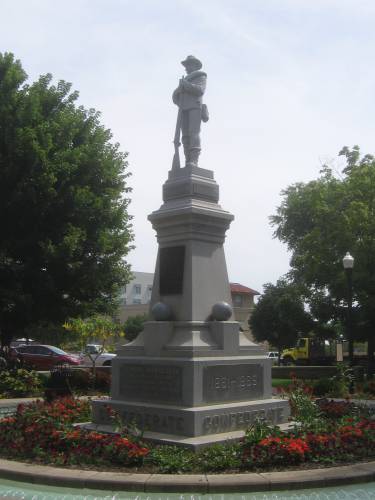
Lest anyone forget, Arkansas was a Confederate state that seceded from the U.S. during the American Civil War. It was a segregationist state, one that spawned a bloody race riot in 1919, and one in which inter-racial marriages were illegal until Loving v. Virginia came through in 1967. Don't think it's over, either: The fact that all the state's national representation is in the hands of the Republican Party—the organization that has monopolized the white-supremacist vote for the last 50 years—speaks volumes about the present-day state of affairs.
Arkansas' leaders didn't bother writing a declaration explaining the reasons why they seceded a century and a half ago, but fortunately several other states did. "Our position is thoroughly identified with the institution of slavery—the greatest material interest of the world," said Mississippi. "The prohibition of slavery in the Territories is the cardinal principle of this organization," said Georgia. The US "has announced that the South shall be excluded from the common territory, that the judicial tribunals shall be made sectional, and that a war must be waged against slavery until it shall cease throughout the United States," whined South Carolina. And lest there was any doubt the Confederate view was white-supremacist and theocratic, Texas gave mention to "the revealed will of the Almighty Creator, as recognized by all Christian nations" and spoke of a government in which "white men" and no-one else were equal.
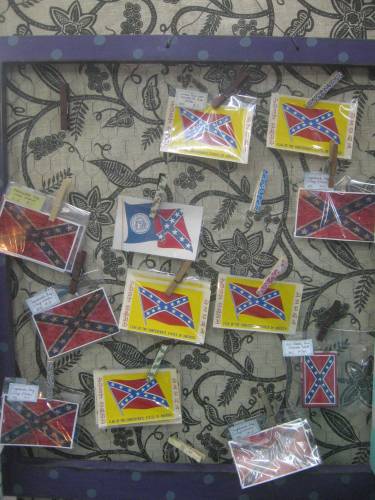
The original Confederate National flag was very indistinct, and essentially was the American flag with a few stars and stripes removed. What we usually equate with the "Confederate Flag" today is the design that originated as the Battle Flag of the Army of Northern Virginia. It's a very striking and powerful symbol: This is why it was quickly embraced on the battlefields and integrated into the canton of the CSA's national flag by 1863. And this is why white supremacists with a hankering for the antebellum south revived the flag as an ideological symbol 90 years later, in the 1950s...neatly coinciding with the desegregation of the armed forces in 1948, the advent of Brown v. Board five years later, and the nascent Civil Rights Movement.
This was the same decade in which the Battle Flag was inserted into the design of the Georgia state flag, and shortly before it was erected in itself above the South Carolina capitol dome. This was the same decade in which "In God We Trust" was shoved into place as a national motto and added to our hitherto-secular currency and "Under God" was inserted into the hitherto-secular Pledge of Allegiance. This was the same decade in which my Grandparents' Senator conflated atheism with Communism and persecuted LGBT workers as "security risks." All of this stuff went down at the same time for the same reasons: As a reactionary backlash against humanism, secularism, civil rights, and the premise of a more inclusive, more modern, kinder, fairer, and more sustainable world.
Don't count on any defender of the Confederate Flag to admit this, though. They delve into a laundry list of euphemisms masking the truth so loosely that it's a wonder why they try at all. "It's about states' rights!" Right: The right of states to assert the right for people to own other people as subhuman property, and the right of slave states to force free states to capture and return fugitive slaves against their wishes. "It's about southern pride!" Right: A pride that's been steeped in white supremacism and de facto Christian theocracy for literally several centuries of time. "It's a symbol of our past!" Right: And you keep dragging that past into the present. "It's about heritage!" Right: It's about the heritage of belligerently starting a war because an abolitionist entered the White House, and the heritage of an economy built upon the labor of slaves. Kind of reminds you of all the insurrectionist threats the Christian right wing has spit out since Barack Obama won two mandates as President of the United States, doesn't it?
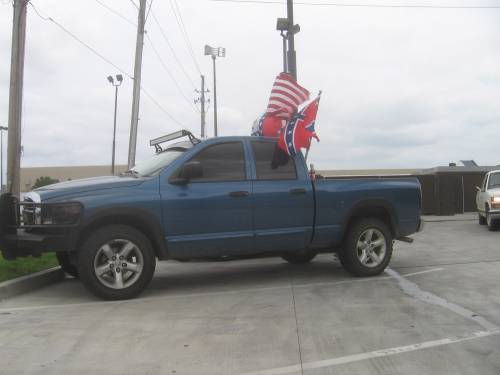

Flying the flags of the Confederate States and United States together confuses me to no end, as the two entities were diametrically opposed and the former was an act of treason against the latter. It would make more sense to wave the Stars and Stripes in tandem with the flag of the USSR.
And considering what the other major entity was that asserted a war upon its right to disenfranchise or exterminate people as subhuman inferiors, overlaying your flag with German military decorations seems like the last thing a neo-Confederate would want to do to improve their case...
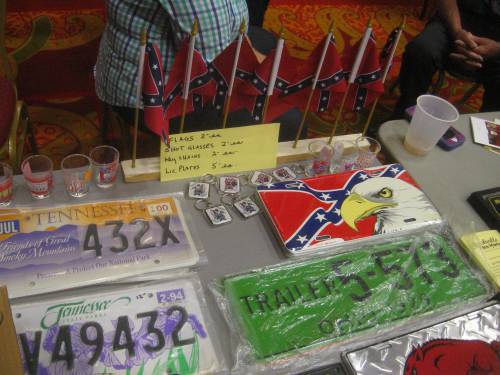
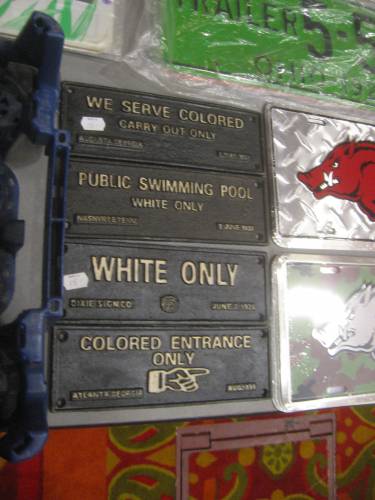
All of this was very much on my mind at the ALPCA Convention in Rogers, and the stench permeated the convention floor itself. Thanks but no thanks: I don't buy license plates from white supremacists or their enablers, thankyouverymuch.












Recent Comments